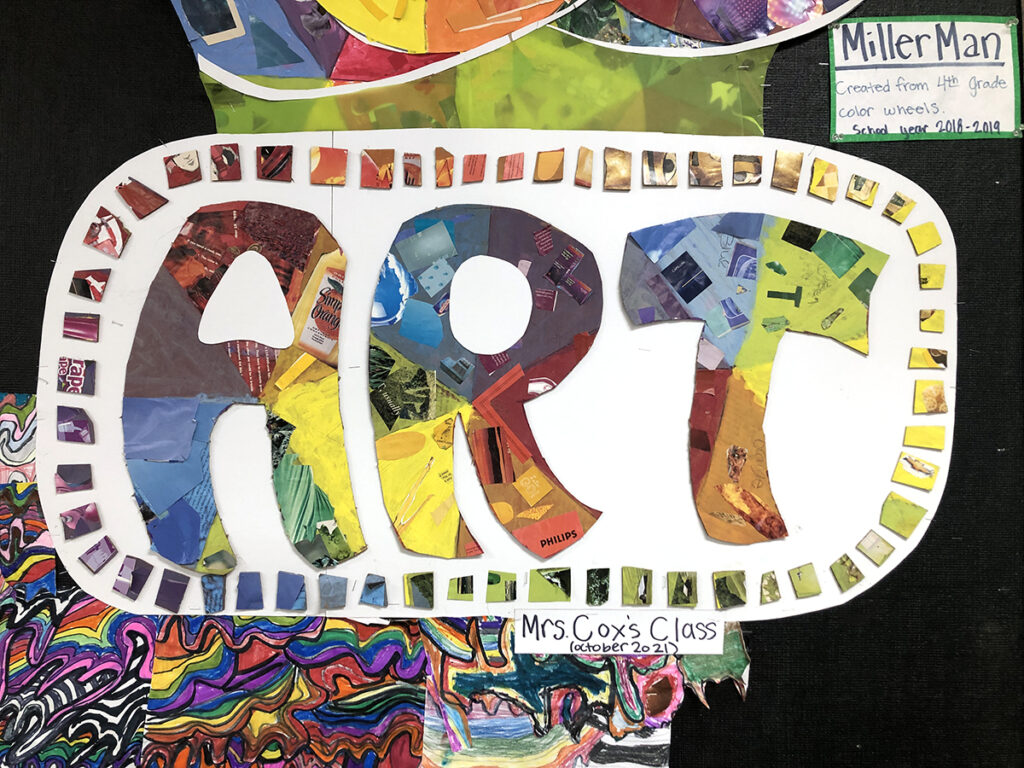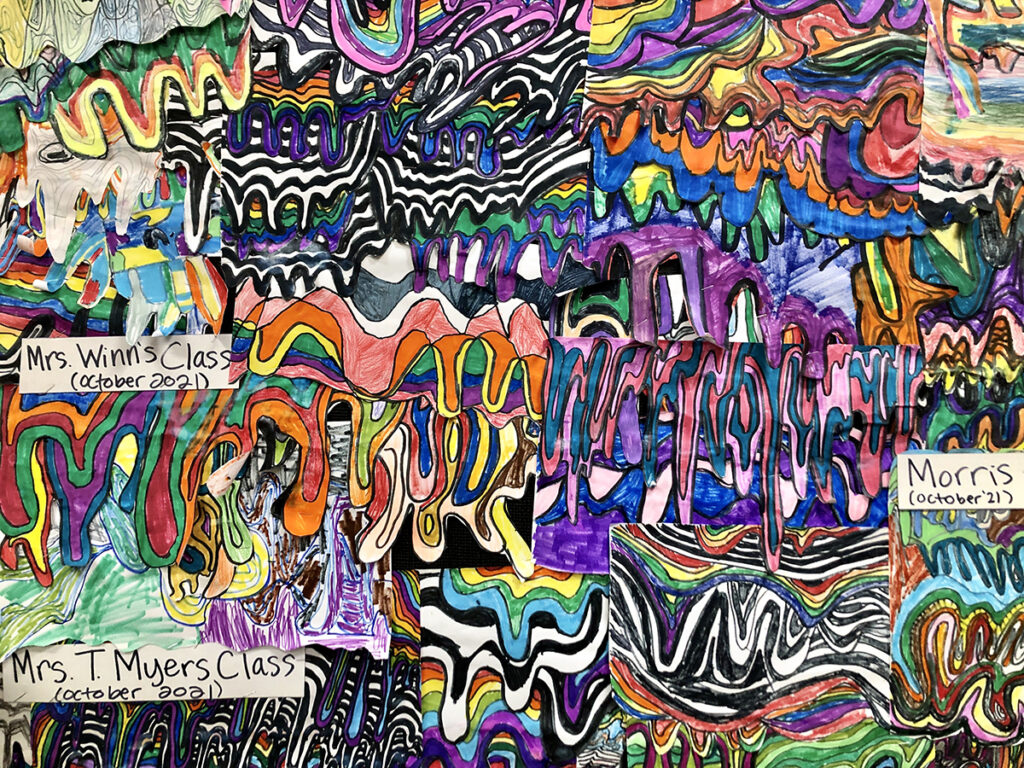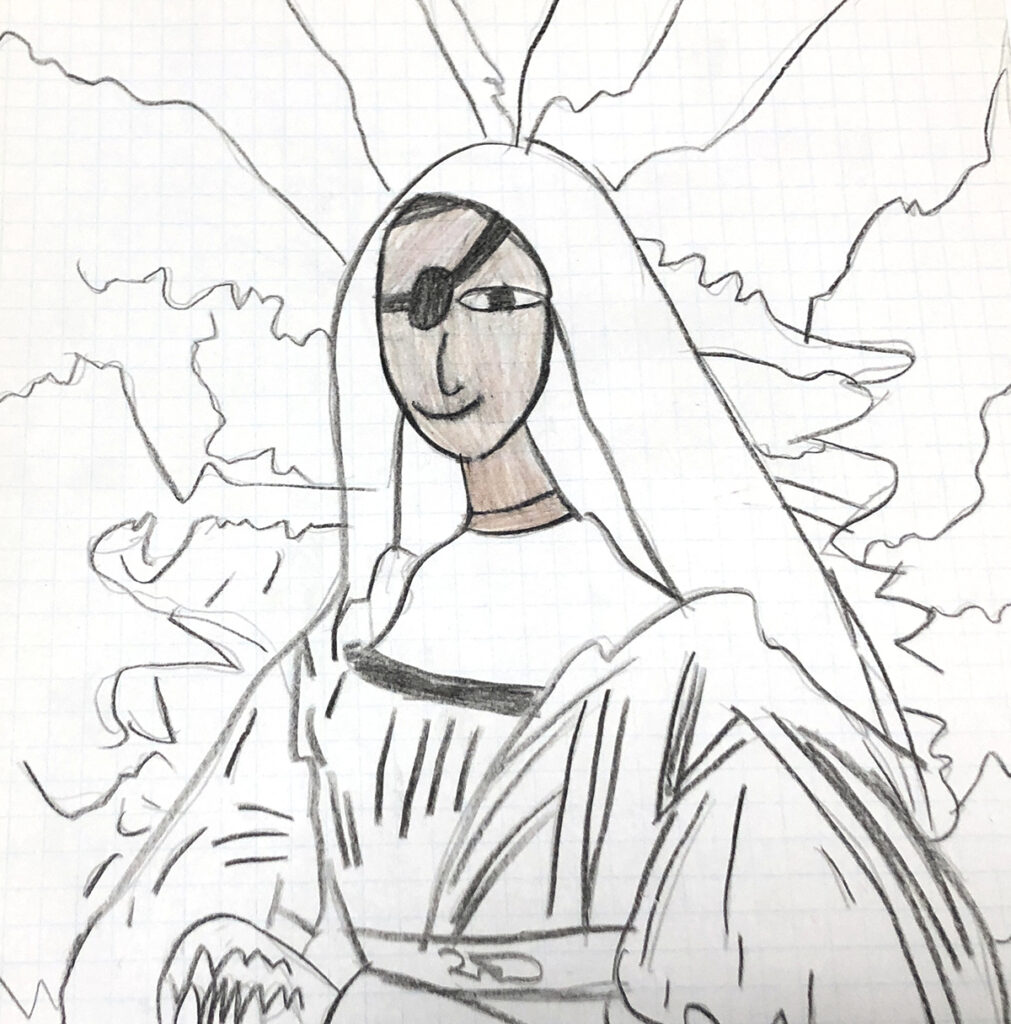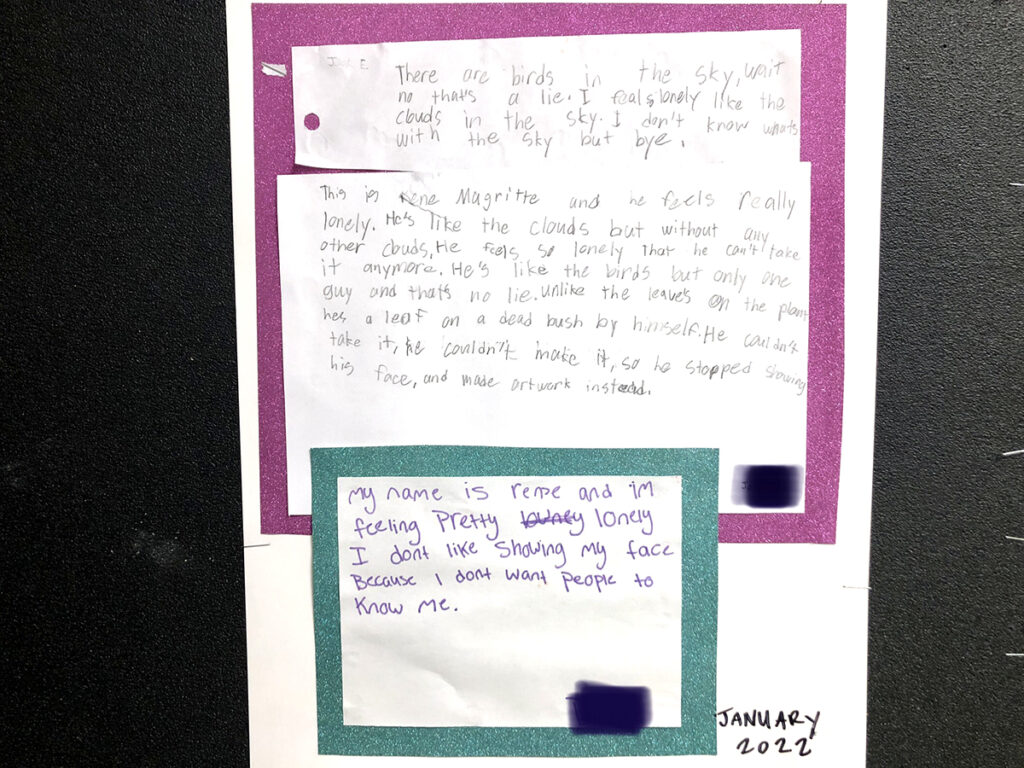Teachers today often feel like they need to battle for their students’ attention—especially when it comes to art history. Dark lecture halls may come to mind but art history does not need to be dry and dull. In fact, with an engaging approach, teaching art history is a surefire way to engage students’ minds. Before you begin, take the time to establish positive student relationships and a studio culture for discovery. Research the facts and let your passion and enthusiasm shine through during instruction! And feel free to add in a little drama to make the lesson as memorable as possible.
The benefits of teaching art history on a consistent basis include:
- Global Thinking
Students see similarities and differences between people and cultures across the globe. - Exposure
Share distinct artists and iconic artwork to reveal a variety of cultures and geographic locations. - Range of Perspectives
Art often shares an artist’s thoughts and opinions. Introduce students to a broad range of thinking. - Informed Artmaking
Students can observe the possibilities of new mediums, processes, and styles before approaching an assignment.

Inserting art history into your classroom on a regular basis sets the norm. If you are looking to gain more confidence in your art history repertoire, enroll in the Integrating Art History graduate course to strengthen your knowledge. Learn strategies to appeal to student interests and foster an appreciation for art while maintaining the integrity and richness of art history. Connect with an admission counselor for more information.
Here are ten ways to add art history to your curriculum.
1. Choose one artist to showcase per unit.
Do your research to find the artist that will have the best alignment with your unit. Connections can be through the medium, subject matter, technique, or process.
Here are three artists and how you can apply them to a unit:
- Jen Stark: Drippy Lines
Jen Stark is a great contemporary artist to study line and color. Stark uses a variety of line widths and directions. She also uses color palettes of black and white, cool colors, warm colors, and the rainbow gradient. - Keith Haring: Action Figures
Practicing drawing the human form can be complicated, especially for lower grades. Veering away from stick figures can be a tough challenge! Keith Haring simplifies the human form in cookie-cutter-like shapes with bold lines and color. Drawing in Haring’s style allows students to study the human form in a variety of uncomplicated action poses. - Giuseppe Arcimboldo: Fruit Faces
Think outside the box by combining portraiture with Surrealism. Giuseppe Arcimboldo was an Italian painter who created portrait heads made entirely of produce and vegetation. The combination of learning facial proportions with imaginative new uses for produce will lend itself to an innovative lesson plan. Students may be shocked to see a 500-year-old portrait with fruit and vegetables for a face, but this invites them to focus on the foundational shapes and forms of produce.

2. Use books!
Aligning an artist to a unit gives students a cross-curricular lesson with a natural tie-in to history. Make a literacy connection by reading books about the artists. The World’s Greatest Artist is a collection of over forty books. They are great introductions for elementary students. For middle school and higher, Secret Lives of Great Artists has more risque stories and more thorough information on a handful of artists. Review all resources and preview all artists before sharing with your students.
3. Incorporate FLEX Artist Bios.
FLEX Curriculum is an adaptable curriculum aligned to all 50 states’ visual art standards, including NCAS. FLEX includes student-facing resources such as artist biographies. Each Artist Bio is written at an eighth-grade reading level but can be modified for lower and upper grades. They include a brief history, notable artworks, achievements, quotes, and more. Use them to help students connect to diverse historical, contemporary, and living artists. For more information on how to get these Artist Bios in your classroom, fill out this short contact form.

4. Watch a PRO Pack.
For more strategies on how to teach art history and how to get your students to interact in meaningful ways, watch a PRO Pack for self-paced professional development. These teacher-facing videos are where you can learn from facilitators who are art teachers just like you. The good news is many districts will provide this for you! To learn more, check out this article and fill out this form.
Here are two PRO Packs worth checking out in PRO Learning:
- Art History in the Elementary Art Room
- Art History in the Secondary Art Room
5. Connect with your students’ diverse interests.
Our students have vast and diverse interests. Good thing art is also vast and diverse! There is an artist connection out there for each one of your students to fall in love with. Let’s take a look at some common artists and topics that intrigue students of all ages. And, as always, be sure to preview all artists before sharing with your students.
Here is a short list of artists and their stories your students may find fascinating:
- Students With an Injury
Frida Kahlo’s self-portraits depict her many injuries. From a bus accident to being restricted to a bed, and finally dressing up as a man to be taken seriously, Kahlo paints us her biography. Students with broken bones in the art room can feel stuck, especially if their dominant hand or arm is in a cast. Share Frida’s self-portraits to inspire and encourage students to create art while physically challenged. - Students Who Are Passionate About Social Issues
As students get older and start forming their own hobbies, interests, thoughts, and opinions, they may gravitate toward social issues. Encourage this development with 5 Activist Artists You Might Know and 10 You Might Not Know… Yet! - Students From Ghana and Nigeria
If your school has a large population of students from Ghana or Nigeria, your students may find common ground with the sculptural artist El Anatsui. He is a sculptor from Ghana who currently lives and works in Nigeria. He takes materials from the streets and ground and turns them into large-scale installations. His body of work is comprised of sculptural wall mosaics made out of liquor seals sewn together. - Students Who Love Video Games
Students who are into video games will be inspired by Invader’s artwork. This contemporary artist uses ceramic tiles with video-game-inspired characters such as Space Invaders, Pac-Man, and Super Mario Brothers. This artist “invades” urban areas by installing tile mosaics over cities. If you are lucky enough to live in a city that has been “invaded,” have your students go on a scavenger hunt. Alternatively, brainstorm how you can install artwork throughout your classroom or school.
6. Try Art History Remix.
Give your students a chance to rework a famous artwork. Project a piece like Leonardo da Vinci’s Mona Lisa. For younger students, show a simple line drawing of the painting. Sometimes a more simplified version can help students draw what they see. Students reinvent the portrait with a modern twist by changing or adding elements. This can include a new hairstyle, modern clothes, different backgrounds, or updated accessories. Ensure the main composition and a few traditional elements remain intact so the figure is still clearly recognizable. This is a substitute lesson favorite and can be adapted for any work of art. Include a FLEX Artist Bio (see above) to read along with this activity!

7. Study other cultures.
Art history is broad and stretches from the beginning of time to now. Teaching about entire cultures and time periods is another way to enhance your lessons with art history. Architecture units are excellent avenues to discuss different civilizations such as Greek, Roman, prehistoric, Egyptian, and beyond. Pair your lesson with diverse mythology stories from each culture to create higher student engagement.
8. Compare and contrast past and living artists.
Just like history, art history can have a sneaky and fun way of reappearing. Try comparing and contrasting historical masters with contemporary, living artists. This helps to make artwork and meaning relevant to students.
Here are two artist pairs your students can compare and contrast:
- Kehinde Wiley and Gerard ter Borch
Kehinde Wiley is a contemporary artist who primarily depicts black people in photorealistic paintings inspired by the old masters. Jacob de Graeff by Wiley shows an artist asked to pose from the streets. It is modeled after a 17th-century Dutch portrait by Gerard ter Borch of Jacob de Graeff. Both paintings have great similarities yet stark differences. - Claes Oldenburg and Tamara Kostianovsky
Soft sculpture artists Claes Oldenburg (who passed away in July of 2022) and contemporary artist Tamara Kostianovsky have similar, yet diverse, three-dimensional forms. Oldenburg’s popular cheeseburger sculpture can be discussed alongside Kostianovsky’s floral hanging meat sculptures.
9. Compose a poem or rap.
Write a poem or rap about a famous work of art. This is a great way to tie in ELA standards while observing artwork. As an extension activity, students can perform their poems and raps for the class. Don’t Miss This One-Day Lesson That Connects Poetry and Art Analysis. It also makes a great substitute plan!

10. Integrate music.
Add another of the five senses to the art classroom to help students retain information: listening to music. Play the most popular song from the year the artwork was created. Students compare and contrast the characteristics of the music with the artwork. This also helps them orient a historical timeline better than just seeing the artwork. Listen to all songs and preview all lyrics before sharing them with your students to ensure they are appropriate. (Now, if only we knew what the artists were eating while they were creating their pieces!)
For example, I Want To Hold Your Hand by the Beatles was one of the most popular songs when Rene Magritte’s The Son Of Man was painted. Before sharing the origin date of the painting, students form a hypothesis about when the Beatles were popular and when Magritte’s painting was created.

Integrating art history into your curriculum can spark student interest and help you make strong cross-curricular connections. Bring more of the senses into the art room with music to help reinforce the characteristics of the artwork and set the context. Poll your students to find out what their interests are and find artists who share the same hobbies. Grab your scope and sequence, do your research, and figure out what artist, time period, or culture would best align with the units you are teaching.
Make art history come to life this year by bringing in pieces of the past, one powerful step at a time.
What is your favorite art history lesson or activity?
What other benefits can art history bring to your students?
Magazine articles and podcasts are opinions of professional education contributors and do not necessarily represent the position of the Art of Education University (AOEU) or its academic offerings. Contributors use terms in the way they are most often talked about in the scope of their educational experiences.





